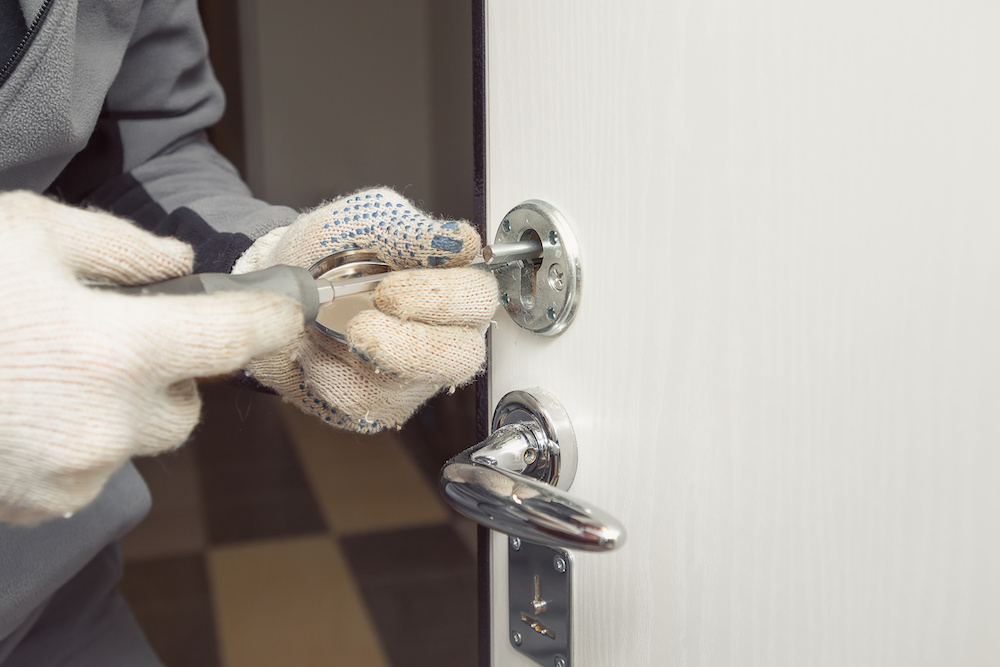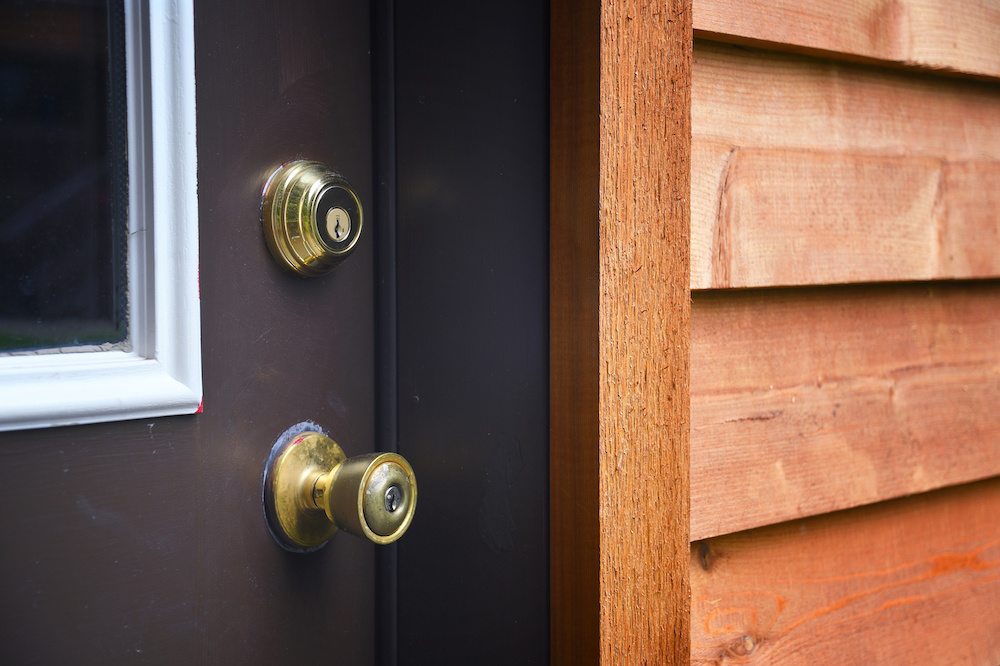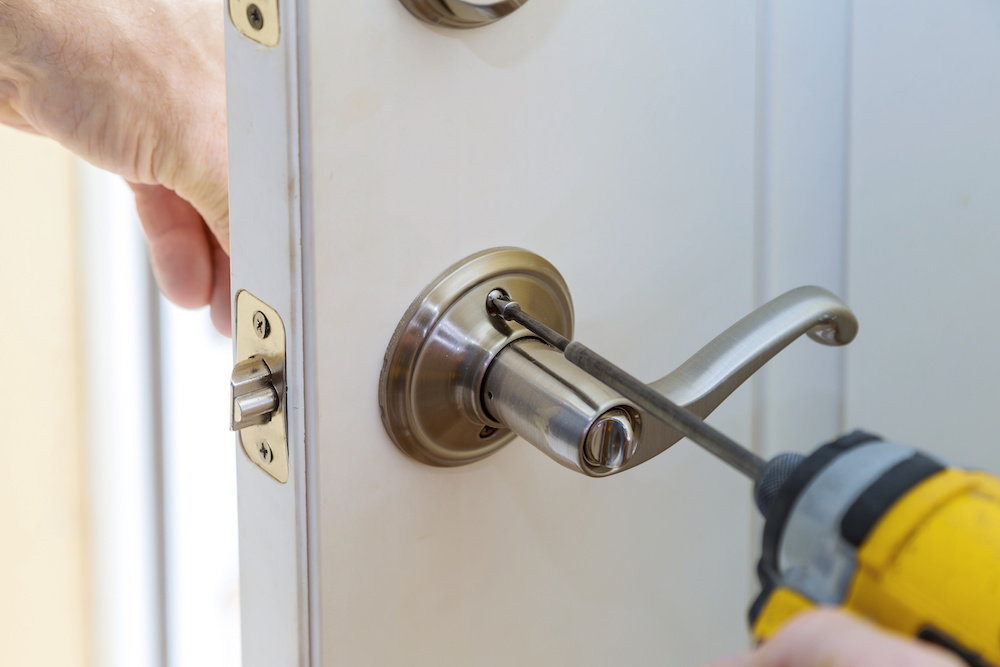A double key deadbolt lock is a popular choice among homeowners.
Unlike the single-cylinder option, you need a key to unlock the deadbolt from the inside or outside your home.
It is an added security feature, making it difficult for burglars or intruders to enter your home.
Removing this type of lock is easy, as long as you understand its mechanism and installation instructions.
Keep reading to learn how to remove a double key deadbolt without damaging its parts or your door.
How Double Key Deadbolts Work
Also called “double-cylinder locks,” a double-key deadbolt requires a key for locking and unlocking the door from the outside or inside.
Unlike a typical single-cylinder lock, you can’t thumb-turn the lock to open it.
A double-cylinder lock might look simple and plain on the outside, but they are much more complex on the inside.
A little research to better understand its parts and how each one works can help you fix common lock problems, including proper removal.
Parts of a Double Key Deadbolt
Below are some of the most important parts of a deadbolt:
Bolt
The bolt refers to the small piece of metal that extends from the door and into the frame.
When you close the door, the bolt will lock to prevent someone from opening it from the outside or the inside without a key.
Thumb Latch
The thumb latch is the part of a double-key deadbolt that extends from the surface.
It rotates and unlocks the deadbolt from the inside.
Turnpiece
Turnpiece is the locking mechanism of a deadbolt that extends from the cylinder on the outer key.
This component is connected to the thumb latch, allowing the user to operate the lock.
Keyhole
The keyhole is where you insert the key.
Strike Plate
This is a piece of metal attached to the doorjamb itself. It works by extending the bolt into the hole to keep it closed.
The strike plate also protects the rest of the structure against friction and increases the level of security provided.
How To Remove a Double Key Deadbolt
Whether you’re updating your home locks or replacing a broken one, you can remove a double-key deadbolt with just a few tools.
The problem is, some deadbolts are mounted using tamper-resistant screws.
If that’s the case with your lock, it’s more advisable to hire a locksmith.
Getting around with tampered screws is possible, but there’s a big chance that you will damage your deadbolt and your door in the process.
Here’s how to remove a double key deadbolt in easy steps:
Step 1: Prep the Tools
You only need a few tools to get started. These are:
- Phillips-head screwdriver
- 5/64-inch Allen wrench
- Door prop
- Container to hold door hardware

Step 2: Unscrew the Deadbolt Faceplate
Start by removing the existing deadbolt faceplate from the door edge.
The faceplate has two flathead screws. You will need to remove them using a Phillips screwdriver.
Note:
Schlage and Falcon double-cylinder deadbolts feature concealed screws to prevent tampering.
Some models make use of screw caps, while others have a faceplate.
Deadbolts that use screw caps are easy to identify because you will see two circular caps over the thru bolts.
You can remove these caps by drilling them out. If they aren’t securely attached to the door edge, you might be able to pry them off.
After removing the screw caps, you can then uninstall the screws as usual.
Double-key deadbolts with faceplates will appear to have standard housing on both the outside and the inside.
You can pry off the faceplate by using a small flat screwdriver.
There’s a small divot under the cylinder plug hole where you can insert the flat screwdriver.
However, you have to be extra careful not to damage the faceplate if you plan on installing it again.
After removing the faceplate, you’d be able to see the thru bolts, which you can now unscrew normally.
Step 3: Uninstall the Thumb Latch Assembly
Remove the thumb latch from the interior side of the door.
Depending on the brand and model of your deadbolt lock, you may remove the screw bolts from either side.
Then, pull it horizontally from the door.
Step 4: Loosen the Bolt
Insert the long shaft of the wrench into the space on either side of the bolt.
Then, turn the set screw counter-clockwise two or three times to loosen it. Repeat these steps on the other side.
Step 5: Remove the Cylinders
Turn the cylinders clockwise until its free of the mortise housing.
You can insert the key halfway to help turn the cylinder. Then, do the same for the opposite side.
Step 6: Remove the Bolt Assembly
After loosening up the parts, you can now safely pull the bolt from the door edge.
Lastly, remove the housing from the door hole.
Tips for Removing Double Key Deadbolts
Consider cutting around the perimeter of the deadbolt using a sharp utility knife.
Doing this will prevent you from peeling or damaging the door’s finish while you remove the lock.
If you plan on reinstalling the deadbolt, have a container nearby where you can place all the parts you just disassembled.
Some parts can be too small, such as the screws, so you must have a container ready before you start uninstalling the lock.
If you’re unsure what you’re doing, or you can’t remove the deadbolt after following the steps above, it’s best to call a locksmith.
Again, different makes and models of double-key deadbolts will have varying designs and security features.
As such, the manner of uninstalling them might be slightly different.
You also want to remove the lock slowly. Prying on the bolt gently won’t damage the lock if the bolt is well-designed and properly installed.
If there are no screws on the inside plate, they could be hidden somewhere.
It depends on the model and brand of deadbolt lock you’re using.
For stubborn parts, you can usually loosen them by tapping the head of the screw with an old chisel and hammer in a counter-clockwise direction.
You can also use pliers to help take out the screws.
Conclusion
Removing a double-key deadbolt may not be the easiest, but it’s something you can do with little help from the pros.
Plus, you only need a few tools to get it done.
It’s important to do each step gently and properly to prevent damaging the bolt and your door, especially if you plan on reinstalling the lock.



